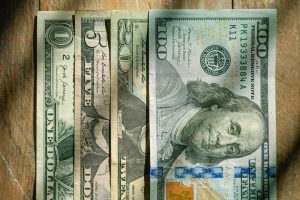Forex, short for foreign exchange, is the largest financial market in the world with an average daily trading volume of over $5 trillion. It is the market where different currencies are exchanged for one another, and it is open 24 hours a day, five days a week. Forex trading offers many benefits including high liquidity, low transaction costs, and the ability to trade on margin. However, traders need to be aware of the costs involved in forex trading.
In this article, we will explore the different costs associated with forex trading and how much they can add up for traders.
1. Spreads
The spread is the difference between the bid and ask price of a currency pair. It is the cost of trading forex and is usually measured in pips, which is the smallest unit of measurement in forex.
Spread can vary depending on the broker, currency pair, and market conditions. Generally, major currency pairs like EUR/USD have lower spreads compared to exotic currency pairs like USD/ZAR. The spread can also widen during periods of high volatility, which can increase trading costs.
Forex brokers can offer different types of spreads, including fixed and variable spreads. Fixed spreads remain the same regardless of market conditions, while variable spreads can widen or narrow depending on market conditions.
2. Commissions
Some forex brokers charge commissions on top of the spread. This is usually a percentage of the trade value or a fixed amount per trade. Commissions can add up quickly, especially for high-frequency traders who execute multiple trades per day.
Commissions can vary depending on the broker and the type of account. For example, some brokers offer commission-free accounts but charge higher spreads, while others charge lower spreads but a commission per trade.
3. Overnight fees
Forex trading involves buying and selling currency pairs, and the trade is settled two days later. If a trader holds a position overnight, they will be charged an overnight fee, also known as a swap fee.
The overnight fee is based on the interest rate differential between the two currencies in the currency pair. The trader will receive or pay interest depending on whether the interest rate of the currency they are buying is higher or lower than the currency they are selling.
4. Slippage
Slippage occurs when the trade is executed at a different price than the one requested by the trader. This can happen in fast-moving markets or during periods of low liquidity.
Slippage can result in additional costs for traders, as they may not get the price they were expecting. Slippage can be reduced by using limit orders or other types of orders that allow traders to specify the price at which they want to execute the trade.
5. Deposit and withdrawal fees
Forex brokers may charge fees for depositing or withdrawing funds from the trading account. These fees can vary depending on the payment method used, such as credit card, bank transfer, or e-wallet.
Some brokers offer free deposits and withdrawals, while others charge a percentage of the transaction amount or a fixed fee per transaction. Traders should check the fees before choosing a broker.
Conclusion
Forex trading can be a profitable venture, but traders need to be aware of the costs involved. The main costs of forex trading are spreads, commissions, overnight fees, slippage, and deposit and withdrawal fees.
Traders should choose a broker that offers competitive spreads and commissions, low overnight fees, and minimal deposit and withdrawal fees. It is also essential to have a trading plan that takes into account the costs of trading and the potential profits. By managing costs effectively, traders can maximize their profits and minimize their losses.





